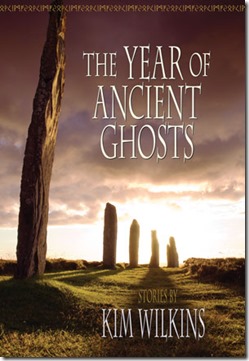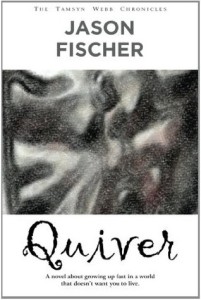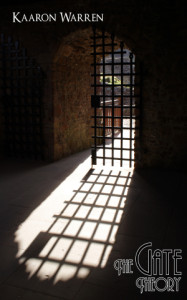![HillJ-NOS4-UK&US_thumb[1]](/wp_content/uploads/2013/09/HillJ_NOS4_UKUS_thumb1_300x226.jpg) NOS4A2 by Joe Hill
NOS4A2 by Joe Hill
ISBN: 978-0575130678
Reviewed by Marty Young
“Victoria McQueen has a secret gift for finding things: a misplaced bracelet, a missing photograph, answers to unanswerable questions. On her Raleigh Tuff Burner bike, she makes her way to a rickety covered bridge that, within moments, takes her wherever she needs to go, whether it’s across Massachusetts or across the country.
Charles Talent Manx has a way with children. He likes to take them for rides in his 1938 Rolls-Royce Wraith with the NOS4A2 vanity plate. With his old car, he can slip right out of the everyday world, and onto the hidden roads that transport them to an astonishing – and terrifying – playground of amusements he calls “Christmasland.”
Then, one day, Vic goes looking for trouble—and finds Manx. That was a lifetime ago. Now Vic, the only kid to ever escape Manx’s unmitigated evil, is all grown up and desperate to forget. But Charlie Manx never stopped thinking about Victoria McQueen. He’s on the road again and he’s picked up a new passenger: Vic’s own son.
Exclusive to the print editions of NOS4A2 are more than 15 illustrations by award-winning Locke & Key artist Gabriel Rodríguez.”
***
I’ve been a fan of Joe Hill’s ever since I read his collection of short stories 20th Century Ghosts, and in particular his short tale called ‘Pop Art,’ about a friendship with a living inflatable boy. It sounds odd and somewhat crazy but it was a highly emotional tale that knocked me for a six. As I’m quickly discovering, Hill is very capable of making the odd believable and fuelling it with a lot of emotions along the way.
Since that first encounter, I’ve read Heart-Shaped Box and Horns, along with the brilliant Locke & Key, and have enjoyed them all. Subsequently, I was excited about NOS4A2 ever since I knew it was coming out. But the problem then is that expectations kind of get huge and you know the damn book won’t live up to it. I ended up having Hill’s monster tome (it’s 692 pages) sitting on my desk for several weeks before I dared pick it up and begin reading, not wanting to ruin just how good the thing looked (my hardcover came with deckle edging and included fantastic artwork by Hill’s Locke & Key partner Gabriel Rodríguez).
So was it worth it? Did it live up to my expectations? Yes, for the majority. Is it worth reading? Absolutely, without a doubt.
At first, the story sounded somewhat odd when I tried explaining it (there’s a guy who drives an old car that is an extension of himself and he rejuvenates himself by kidnapping kids and taking them to an imaginary world called Christmasland, where nothing bad ever happens, except the kids become frightful things with rows of small hook-like teeth and a desire for playing bloody games, while the heroine is mentally scarred by what happened in her past and can travel to her own make-believe world by a magical bike over a bridge that doesn’t exist but can be seen by others, meeting along the way a stuttering librarian who has her own magical scrabble tiles that tell her what’s going to happen…), but the more I thought about it, the more frightening it started to sound. Either way, the insanity is believable, the story engrossing, and the characters, each of them broken and troubled, connect strongly with the reader, and that empathy is what makes this novel work so well and what makes it so damn terrifying.
The heroine, Vic McQueen is a bad-ass tattooed biker mom with a foul mouth, who would do anything to protect her son from the true villain of the book, Charles Talent Manx III. She is troubled and damaged in the most extreme ways, even setting fire to her home by putting all of the telephones into the oven, and spending time in a mental hospital as a result (you can’t blame her, though, as dead kids from Christmasland were calling her, and that’s probably enough to derail the most sane of us). As a kid, she discovers she can ride across the Shorter Way Bridge on her Raleigh Tuff Burner bicycle to her ‘inscape,’ the world inside her. Everyone has an inscape; Vic uses hers to find lost things, while Manx visits his via his Rolls-Royce Wraith and takes what doesn’t belong to him. And as all inscapes are connected, Vic and Manx soon run into each other, adding the biggest scars to Vic’s then young life, and the reason for Manx’s desire for revenge.
The tale spans several decades, and when we leave Vic as a child and return to her as an adult with a young boy of her own, we can see the results of her troubled past gleaming from her eyes and colouring in all she does. She has tried to convince herself her inscape was a delusion, but then the stuttering librarian turns up and sends her spiralling into madness again. Vic McQueen is a wholly believable character whose suffering drives her on and you can’t help but feel for her plight. Her obese geek husband (who saved her as a child) is like a giant but protective teddy bear, and you’re thankful for that ‘cos you know he is always going to have her back, and Vic deserves someone like that. Hell, I’d have her back. No bastard would hurt her under my watch.
Hill’s characters are the driving force of this story. Even Bing Partridge, Manx’s mentally challenged sidekick, evokes feelings of pity instead of hate. Bing believes he is doing the right thing throughout the book and has no idea he’s one of the villains, something which perhaps makes him come across as even more pitying and horrifying at the same time. That’s the same with Manx, too; he doesn’t see himself as evil, only as necessary in order to ‘save’ the children from a life of misery caused by unloving parents. But whereas Bing is the creepy guy you feel sorry for, Manx’s cheerfulness is always unsettling. He’s not nice at all.
There is a lot of horror in NOS4A2 but the novel is by no means explicit. The abduction of a child would be most parent’s worst nightmare, and the kidnapping of a parent as well is family-shattering. Bing has his horrible way with the parents but this horror is conducted off the page, with Bing thinking about the deep loving conversations he had with them as he teaches them about love. As Arthur Conan Doyle once said, “Where there is no imagination, there is no horror.” Here, Joe Hill leaves us to vividly imagine what these poor people endured in their final hours, and this shaded horror works a treat.
Perhaps the biggest sticking point for this reviewer was the ending, which didn’t really do the book justice. It’s difficult to comment too much here without giving it away, but it will suffice to say a character I had spent many hundreds of pages getting invested in, isn’t really afforded their dues. And to be honest, this left a bitter taste in my mouth. However, this is a small gripe about an otherwise highly enjoyable read. The ending doesn’t ruin the book and nor should it put you off.
The sneaky little references to the works of Hill’s dad, Stephen King, were a neat touch, too; there’s Pennywise’s Circus, Mid-World, Shawshank Prison, the True Knot (from King’s upcoming Doctor Sleep), and even a mention of King’s fictional town of Derry. Hill has said in interviews that instead of trying to hide from his father’s huge shadow, he would embrace it, and have a little fun. Indeed, despite the stark horror filling the pages of NOS4A2, there is a lot of playfulness throughout the book. Hill also references is own earlier work, in particular the Treehouse of the Mind from Horns, and the town of Lovecraft, MA, from Locke & Key.
NOS4A2 is a highly recommended book that can be devoured as easily as Charles Talent Manx III devours children. Joe Hill is already a wonderful storyteller, and NOS4A2, his biggest book in both size and scope to date, proves he is only getting better.
- review by Marty Young
His website is www.martyyoung.com
.


